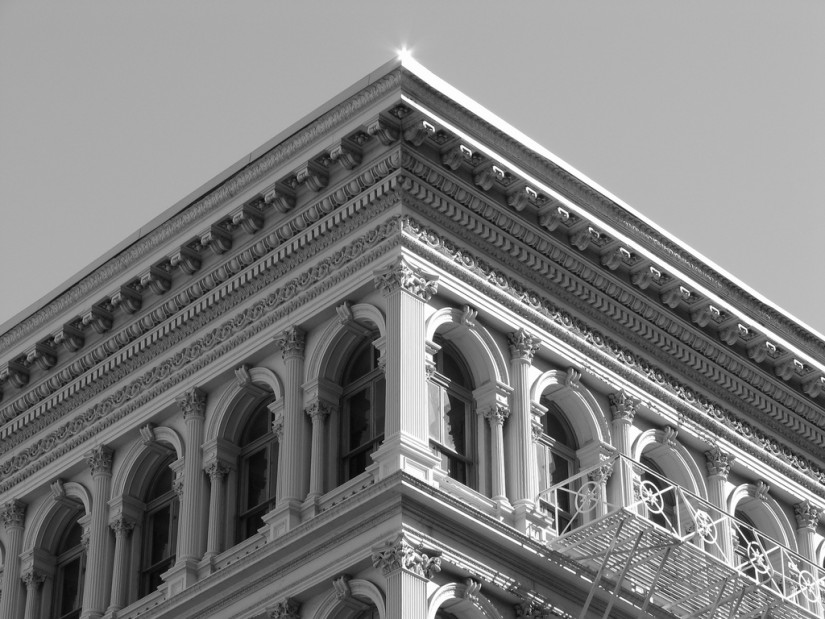Architecture and Engineering Considerations for NYC Landmarks

Settled in 1624 and consolidated in 1898, New York City is rich in cultural and historic legacy, and it should come as no surprise that local authorities are highly committed with the preservation of iconic buildings and city features.
The Landmarks Preservation Commission (LPC) is responsible for historic building preservation in NYC, and is the largest agency of its kind in the nation. There are two main ways in which the LPC can grant landmark status to a building:
- Individual landmarks: Specific buildings that are considered part of the historic and cultural legacy of NYC may be granted individual landmark status by the LPC, where the designation is exclusive for the building and does not affect its surroundings.
- Historic districts: Considering the rich architecture collections in NYC, the LPC can also designate entire districts as landmarks if the density of eligible buildings is high enough. New constructions in landmark districts are reviewed by the LPC to ensure their architecture matches that of surrounding buildings. Brooklyn Heights was the first historic district designated in New York City, back in 1965. Other notable examples include Carroll Gardens, Clinton Hill, Park Slope and Fort Greene.
Basically, any building with landmark status is protected by the LPC. Most architectural and engineering projects carried out for buildings with the designation require approval by the Commission, in addition to following the normal permitting process with the NYC Department of Buildings.
What is the Landmarks Preservation Commission?
As stated above, the LPC preserves NYC buildings and districts with historic and cultural legacy, and has existed since 1965. The LPC is composed of 11 commissioners and a staff of around 70 professionals, including architects, historians and attorneys. There is a significant number of landmarks in NYC, and it includes:
- 35,000 properties
- 139 historic districts, which contain most of the properties
- 1355 individual landmarks
- 117 interior landmarks
- 10 scenic landmarks
The LPC is divided into four departments, each tasked with a specific function: Research, Preservation, Enforcement and Archaeology.
- Research Department: Carries out ongoing assessments for NYC buildings, sites and districts, and decides if they are eligible for landmark status. This department also defines the specific landmark designation for each property – individual, scenic or interior.
- Preservation Department:Reviews project permit applications from landmark owners, and approves them if deemed appropriate. The preservation department also prepares applications for review by the entire commission.
- Enforcement Department:Investigates violations to the Landmarks Law and helps property owners correct them. Although corrections are generally required for alterations carried out without a permit, they also apply for permitted but non-compliant work.
- Archaeology Department:Assesses the impact of projects on the archaeological resources of NYC.
Other than the four main departments, the LPC has a Historic Preservation Grant Program for landmark property restoration projects, and an Environmental Review unit to assist other government agencies when assessing the environmental impact of projects.
Which Projects Require an LPC Permit in New York?
In general, any project on a property designated as a landmark must be reviewed and approved by the LPC. Any type of work that affects the building façade requires a permit, and there are only two exceptions:
- Minor reparations and maintenance activities, such as replacing a broken window or repainting a wall with its original color. However, LPC approval is required if you plan to change the type of windows or wish to paint the building with a different color.
- Building envelope improvements where the building appearance is not affected, such as caulking and weather-stripping around windows and doors. If the building appearance will be affected, an LPC permit is required.
Many types of interior work also require LPC permits: it is mandatory when indoor work affects outdoor appearance, or if the building is considered an interior landmark. For example, any HVAC upgrade that involves installing vents or louvers requires LPC approval, since these features alter the building façade.
LPC permits are also mandatory for interior work subject to approval by the Department of Buildings, even if there is no outdoor effect and the building is not an interior landmark. Keep in mind that the opposite does not apply: indoor work that is exempt from DOB approval may sometimes require an independent LPC permit.
LPC Permits for New Constructions
In the case of new constructions, the requirement to obtain LPC approval depends on location:
- New constructions in landmark districts must be reviewed and approved by the LPC, to ensure their architectural design will not contrast with the style of surrounding buildings.
- Approval from the NYC Dept. of Buildings is enough for buildings not located within landmark districts, even if there is an individual landmark in their neighborhood.
When in doubt, the best recommendation is to get in touch with the LPC Preservation Department: they are the authority on all matters related with NYC landmarks. Make sure you review LPC requirements before proceeding with your project, or you may be required to correct unpermitted changes at your own expense!
Responsibilities of Landmark Property Owners
It is important to note that most landmark properties in NYC are privately owned, and their owners assume a series of responsibilities:
- Obtaining an LPC permit for any applicable work.
- Providing adequate maintenance for the landmark property.
Landmark owners must preserve the property in the state in which they acquired it, but are not required to restore any original features that were replaced before they assumed ownership. Although ownership of a landmark property comes with added responsibilities, it is important to note that these properties tend to be among the most valuable in NYC.
There is a common misconception that the LPC can force landmark owners to modify their properties at their own expense, but this is not true. The LPC can only demand changes if you carry out modifications without their approval, or if you obtain a permit but fail to meet their specifications.
Although the LPC designates landmarks on an ongoing basis, staying up to date with their activities is easy thanks to the news page on their website: they publish a press release each time a NYC property is added to their protected landmarks. If you run a real estate or property management company, reading their news page occasionally is recommended.
LPC Historic Preservation Grant Program: Is My Property Eligible?
Since 1977, the LPC has been managing a grant program that focuses on façade restoration for landmark properties, where the incentive normally ranges from $10,000 to $30,000. The following categories of landmark owners are eligible:
- Non-profit organizations: Charitable, scientific, educational, literary and similar organizations are eligible for the grant. It is important to note that only organizations that have not received a grant over the past 10 years can apply, and buildings that will be used for religious activities or government-related purposes are not eligible.
- Property owners with limited income:where the limits are defined by the Community Development Block Grant Program (CDGB), which is under the oversight of the US Dept. of Housing and Urban Development.
The HPGP focuses on the restoration of landmark façades, but interior work also applies if the building has been designated as an interior landmark. Applicants who can fund the project partially are given preference over those who fully depend on the grant. When reviewing HPGP applications, the board assesses the significance and current condition of the building, the potential benefit of the grant, and the financial resources of the applicant.
Renovating landmark property can also make you eligible for tax credits: home renovations in historic districts are eligible for the NY State Homeowner Tax Credit, and properties used for lucrative purposes can earn tax credits of up to 20%.
Concluding Remarks
Landmark properties in New York City have a unique style and are generally much more valuable than similar properties not designated by the LPC. However, make sure you follow LPC guidelines if you decide to acquire one of these properties. In particular, avoid any architectural modifications or building system upgrades before checking the permitting requirements – get in touch with the Preservation Department of the LPC to avoid violations to the Landmarks Law.

Michael Tobias
Michael Tobias, the Founding Principal of NY Engineers, currently leads a team of 50+ MEP/FP engineers and has led over 1,000 projects in the US
Join 15,000+ Fellow Architects and Contractors
Get expert engineering tips straight to your inbox. Subscribe to the NY Engineers Blog below.


